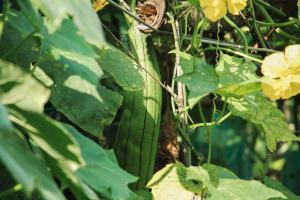Introduction
A water habitat is an environment in which plants and animals live in or near water. There are various types of water habitats, including rivers, lakes, oceans, and wetlands. Each water habitat has its unique ecosystem, which enables different species of plants and animals to live and thrive.
Plants in Water Habitats
Plants in water habitats serve as a foundation of the entire ecosystem. They provide food, oxygen, and shelter for a variety of living organisms. Water plants, such as seaweeds, algae, and other aquatic plants, have adapted to the water environment by developing specialized structures that enable them to anchor themselves to the bottom of the water, float on the surface or absorb nutrients from the water. They also have adapted to the water's changing temperature, light, and flow that affect their growth.
Animals in Water Habitats
Animals in water habitats are also diverse and have adapted various strategies for survival. Fish and other aquatic animals have streamlined bodies that allow them to swim through water quickly. They have gills that enable them to breathe underwater and are cold-blooded, meaning their body temperature depends on the water's temperature. Other animals, like whales and dolphins, are mammals that have evolved to live in water. They have lungs like humans and must come up for air, but they have also developed special adaptations like blowholes to help them breathe.
Water Habitat Food Chain
The water habitat food chain is complex, and each species plays a crucial role in the ecosystem. Plants are the primary producers, and they are eaten by herbivores like snails and insects. These herbivores are then eaten by carnivores, like fish and mammals, and apex predators like sharks and killer whales eat the carnivores. When predators and other animals die, they decompose, and their nutrients are recycled back into the water or used by other organisms, making the ecosystem more sustainable.
Threats to Water Habitats
While water habitats are vital for many species, they are also facing challenges. Water pollution is one of the significant threats to water habitats, and it is caused by human activities like dumping waste products, agricultural runoff, and oil spills. Pollution causes a decrease in water quality, which can harm plants and animals in the ecosystem, causing them to become sick or die. Climate change is also affecting water habitats, changing the temperature and chemistry of the water, which can impact the ability of species to survive.
Conclusion
Water habitats are a crucial part of the global ecosystem that supports various species of plants and animals. It is essential to protect and conserve these ecosystems, which can help ensure their sustainability and the survival of the species that depend on them. By exploring and understanding the unique characteristics of each water habitat, we can take steps to reduce threats and promote the protection and preservation of these critical environments.

 how many times do yo...
how many times do yo... how many planted tre...
how many planted tre... how many pine trees ...
how many pine trees ... how many pecan trees...
how many pecan trees... how many plants comp...
how many plants comp... how many plants can ...
how many plants can ... how many plants and ...
how many plants and ... how many pepper plan...
how many pepper plan...































